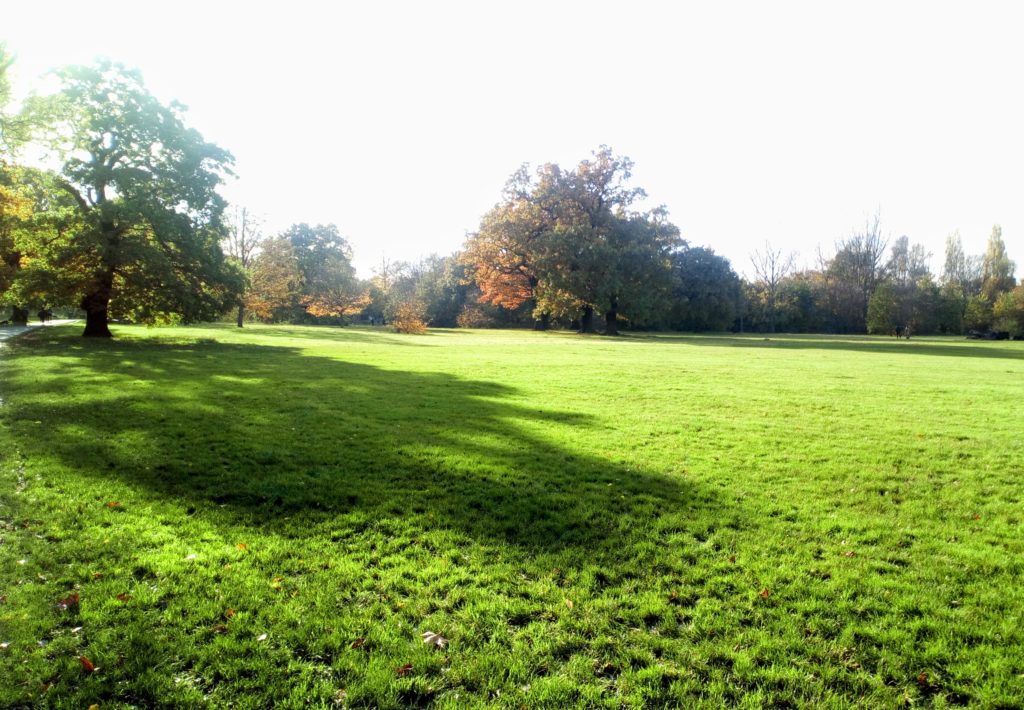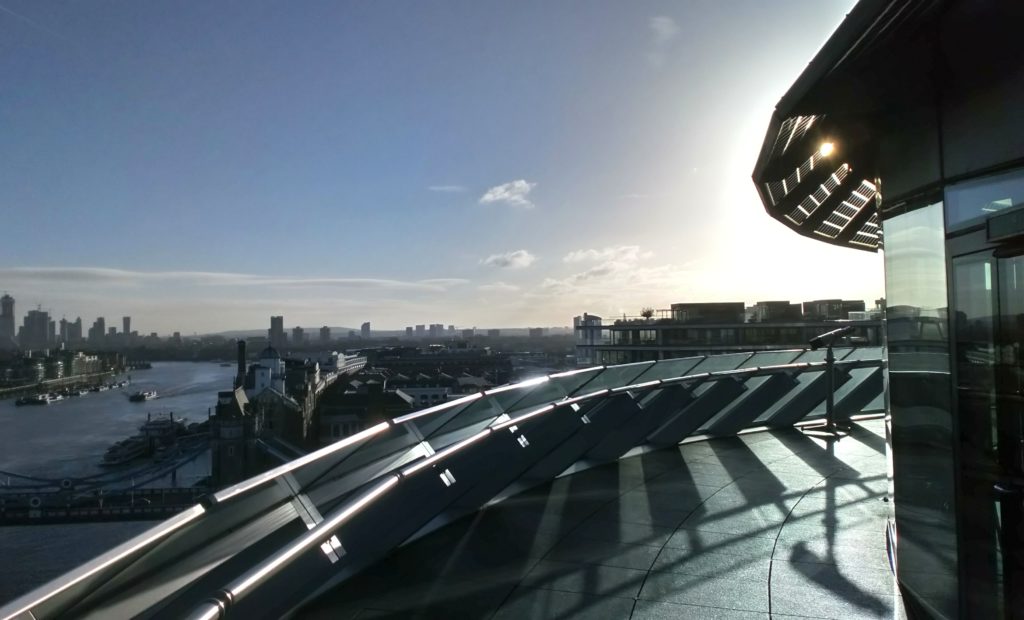As Boris Johnson bolts on a few buses and cycle lanes to sweeten the pill of the vastly expensive HS2 rail project, the first phase of which is unlikely to open for over a decade, many are waking up to the need for much faster action on the climate emergency. But, while public support for action grows, many are made uncomfortable by the thought of no longer being able to have the lives they want.
We can easily see how times have changed to get us here, but it is harder to imagine what life after a plan of radical carbon cuts and reduced use of natural resources might look like. In this piece adapted from a contribution he made to the report The Green New Deal: A bill to make it happen, Green New Deal Group member Andrew Simms pictures a day in the life of the Green New Deal

The pace of life changed with the Green New Deal, and towns and cities became greener
Imagine you wake up in a house where, for a moment, you forget what season it is. Why? The temperature is comfortable, nicely even, neither too warm or too cold, and there’s been no nightly battle over the duvet. That’s long forgotten since your home, one of millions like it in Britain, had an energy retrofit courtesy of the Green New Deal. In fact, since then, you rarely give a thought to the energy bills that once used to sting every month when the money left your account. They have become negligible. You no longer have need for gas, for cooking or central heating, since having a full efficiency makeover and going electric.
It takes an effort to remember when the road where you live was once like a tunnel of parked cars, with a constant river of noisy vehicles spewing exhaust
When you step out onto the street there’s something different too. It takes an effort to remember when the road where you live was once like a tunnel of parked cars, with a constant river of noisy vehicles spewing exhaust fumes back and forth. Today it’s much quieter, clearer and cleaner. But there are some sounds that you do notice more, the conversations of neighbours paused in conversation and the voices of boisterous children who you now see playing outside more.
The clutter of cars began to disappear as investment in proper cycling infrastructure made riding a bike safer and more attractive. At first the hyper low-emission zone for vehicles embraced ever larger areas, then a combination of buses being made free and an ‘electric only’ vehicle policy saw the speed of change accelerate. The streets became less frantic and rushed and before long, when a private car was seen eyebrows were raised. The wheeziness you once felt each day disappeared, and the incipient asthma of your neighbour’s child never fully developed. In addition to the bicycle parking and street planters that spread, many more different trees have been planted so that once out of the house, you are more aware of the seasons and nature as you walk along the street. Some of these changes were started by the Green New Deal, others just speeded up as more people, planners included, got on board with making things happen.
People take pride now in making things last as long as possible
Under new more adaptable working arrangements, you could also stay at home and avoid a commute to work, using access to the latest, universal high speed internet, which is now seen as a utility guaranteed to every home. But today you’re taking your laptop to the local Repair Café, where you’re also going to get your mobile phone checked. Both are several years old now but with new rules on manufacturers to make products, especially electronic goods, easier to maintain, upgrade culture changed utterly and people take pride now in making things last as long as possible.
The Repair Café is on the High Street which also looks very different to the time before the Green New Deal was passed into law. Back then every third or fourth shop was empty, and most of the others were the same old chain stores. There’s still a few of those, but they’ve been joined by a local Library of Things, where the community can borrow rather than buy a wide range of the type of stuff that you don’t need all the time: tools, garden implements, party equipment and all sorts. There’s also a Remakery where you can learn a range of the kind of practical skills that were being forgotten.
The Green New Deal started to work through the system, increasing employment, improving air quality, boosting local economies and reducing waste and superfluous consumption
These places have become incredibly popular as social gathering places too. Public Produce Shops prove successful too, where fruit, salads and vegetables are sold from local growers, often surplus from the surge of interest in micro allotments, conventional allotments and gardening. Local public and mutual banking also came back into communities as a consequence of some of the Green New Deal measures to compel banking to return to its beneficial public purposes.

There’s time for all of this too, because nothing happens in isolation. As the Green New Deal started to work through the system, increasing employment, improving air quality, boosting local economies and reducing waste and superfluous consumption, the political atmosphere changed making other things possible too. Alongside the Green New Deal the desire for a better Britain for everybody grew along with a determination for a better quality of life. Not only did it make change easier, but it made life better when the option was introduced for anyone to work less than a five day week. It was introduced first in the public sector, following long-standing and successful experience of the same in places like the Netherlands, but quickly spread to the rest of the economy. What made this possible was a simple redress for a long standing inequality. Once unearned income was enjoyed by the minority in Britain who had significant assets which went up in value, it was a case of ‘to those who have shall be given’.
But trials of a version of a basic income scheme balanced by access to universal basic services, revealed a wide range of benefits that made economic and social sense. It released an entrepreneurial spirit benefiting micro and small business, had an array of health benefits, including in overall well-being and mental health, allowed people to make other positive changes, get involved in active democracy and neighbourhood improvements, like through the local Citizen’s Assemblies which led to decisions to increase green spaces, improve air quality and public transport. In fact, low-carbon community transition projects popped up everywhere, creating lots of interesting job opportunities. People found they were becoming better neighbours and family life was improving. It wasn’t all the result of just passing a new Bill, but the Green New Deal proved to be a catalyst that helped us all to reimagine Britain.
The Green New Deal: A Bill to make it happen
The Decarbonisation and Economic Strategy Bill
